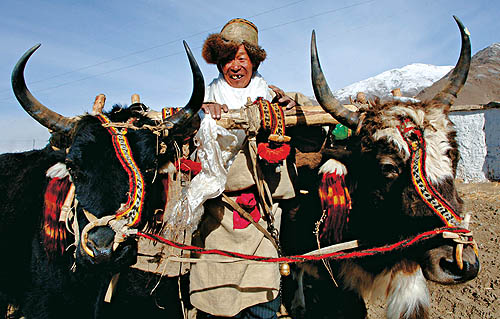|

The hada is a commonest article used for etiquette, and mainly expressing respect, friendship and sincerity. It varies in quality of the material, standard, color and length. In the past it was mostly made of raw silk or linen, while in recent years more and more man-made fibers are used to weave it. There are many ways of folding the hada according to the different grades and uses, which contain different meanings. The Tibetan people worship the white, thinking the white symbolizes the sanctity, sincerity and frankness, so the common hada is white. In addition, there is the five-colored hada, respectively in blue, white, yellow, green and red. It has different explanations. Generally, the five colors represent the sky, clouds, earth, river and the god of protection. |
